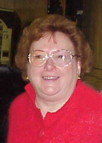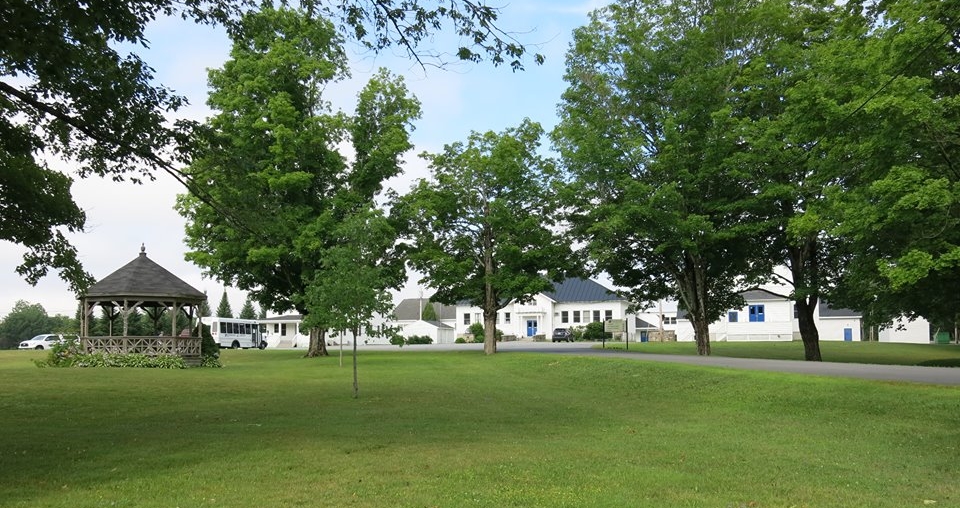MONA ANN MARIE SIROIS
WINSLOW – Mona Ann Marie Sirois, 58, passed away unexpectedly in her Winslow home on Tuesday, January 15, 2019.
Happiest when gardening, Mona enjoyed her flowers and plants and loved gathering with family and friends.
Mona, an LPN, was predeceased by her father, Philip Siirois and her stepdad, John H. Giroux Sr.
She is survived by her mother, Rita Tanguay Sirois Giroux; brothers, John Giroux, Robert, Gerard, and Ronald Sirois, as well as four sisters, Jeanine Chicoine, Pat York, LInda Welch, Diane Believance and families; seven nieces, 11 nephews, nine great-nieces, 15 great-nephews, one great-great-niece, and one great-great-nephew.
A Celebration of life is planned in Mona’s honor for Saturday, March 30, 2019 at 10 a.m. at Winslow Baptist Church, 1040 Augusta Road, Winslow. Friends and family are invited to share in the Celebration of Life and gather later at Hibachi Supreme Buffet, at 350 Kennedy Memorial Drive, Waterville. We will be going “dutch” and all are welcome.
JANE C. MOREAU
FAIRFIELD – Jane Charlotte Moreau, 76, of Fairfield, died on Sunday, March 3, 2019, at MaineGeneral Medical Center, in Augusta. She was born on November 17, 1942, in Wolfeboro, New Hampshire, one of six children of Edna May (Eddy) and Roy C. Wilkins.
She grew up in Farmington, New Hampshire, and over the years she worked in various shoe shops in Maine and New Hampshire.
Jane was a member of the Winslow VFW and enjoyed camping, knitting, sewing, crocheting, and quilting. She also took pleasure in her flowers and was an avid reader. She will be remembered for her caring and helpful ways, as well as being a great pastry cook.
Jane is survived by her husband of nearly 23 years, Ronald Moreau, of Fairfield; daughter, Terri Weston, of Barrington, New Hampshire; son, Dana Ricker and wife, Kristine, of Farmington, New Hampshire; daughter Christine Torno, of Lebanon; five grandchildren and five great-grandchildren.
A graveside service will be held later this spring in Fairfield.
Please visit www.veilleuxfuneralhome.com to share condolences, memories and tributes with Jane’s family.
MICHAEL CALDWELL
ALBION – Michael Caldwell, 51, of Albion, passed away Thursday, March 7, 2019, at his home, following a long and admirable battle with brain cancer. Mike was born in Waterville, June 27, 1967, the son of Linda and Walter Williams, of Waterville and Wayne Caldwell, of Florida.
He proved his immense strength and desire to be with his family when he overcame a prior diagnosis of cancer in 2006.
He graduated from Nokomis Regional High School in 1985 and worked for Tel Power, in Palmyra, for many years before being employed at Tidewater Telecom, of Nobleboro. Mike was proud of his 20 year career at Tidewater and loved his co-workers.
Mike was a family man and was always the happiest when his family was together. He was an avid outdoor enthusiast and enjoyed hunting, fishing, snowmobiling, four wheeling and golfing. His children inherited his love for these activities. He was most proud of his 242 lb. 12 point buck; which got him into the Biggest Bucks of Maine club.
Mike was also very passionate about watching his children play sports. He and his wife Lynn attended every game during each season and spent many hours traveling to cheer for their favorite players.
Mike is survived by his best friend and wife of 20 years, Lynn Caldwell; children, Jessica and her husband Rob Bowie, of Plymouth, Christopher Caldwell and his companion, Kim Bancroft, of Waterville, Camryn Caldwell and Ethan Caldwell, of Albion; three grandchildren, Ashlyn, Conner and Alec Bowie, all of Plymouth; brother Scott Caldwell, of Corinna, sister Michelle and husband Bill Andrews, of Corinna; niece Amanda, nephew Cody and his wife Kristen and daughter Asa; mother-in-law Carol and husband Mike Ouellette, of Pittsfield, father-in-law Marland Soucy and his companion Diane Bartlett, of Dexter; brother-in-law Gary Soucy and wife Danielle and son Emmet. Mike is also survived by his “brother from another mother” Chris Bilodeau, of Winslow.
Arrangements were under the care and direction of Veilleux Funeral Home, 8 Elm St., Waterville. Please visit their website www.Vesiculobronchial.com to share your memories and offer condolences.
In lieu of flowers, donations can be made in Mike’s memory to the Albion Athletic Association, c/o Associations Treasurer, Chuck Roy, 18 China Rd., Albion ME 04910.
WILMA J. BICKFORD
AUGUSTA – Wilma Joan Bickford, 92, passed away Wednesday, March 6, 2019. She was born May 30, 1926, in Weeks Mills, to Lincoln and Gladys (Bailey) Reed.
Wilma graduated from Erskine Academy in 1943 and attended Gates Business College.
She married her childhood sweetheart, Maurice Bickford in 1944 and celebrated 60 years of marriage until his death in 2004.
Wilma was an avid bridge player and loved sharing her knowledge with others. She especially enjoyed her bridge friends at the Cohen Center and at Bob Brooks Garage.
She was a lifetime member of the Lily of the Valley Eastern Star, serving a few years as worthy matron. She worked as an administrative assistant and retired from the state after 20 plus years of service.
Wilma was predeceased by her husband Maurice; sisters Dycal Bonenfant and Martha Pushard.
Surviving is a daughter, Maureen Brochu; son Mark Bickford and wife Dorothy; sister Jane Farrington; grandchildren Kimberly Maddocks, Jason and Nicole Maddocks, Tara and Shawn Hembe, Amy and Jason Corliss and Diana Bickford; 15 great-grandchildren; two great-great-grandchildren; as well as several nieces, nephews, and cousins.
Spring burial will be in Maine Veterans Memorial Cemetery, Augusta; date to be announced.
Arrangements have been entrusted to Plummer Funeral Home, 16 Pleasant St., Augusta.
Condolences, photos and memories may be shared at www.plummerfh.com.
GLORIA A. PAPSIS
WINSLOW – Gloria A. Papsis, 91, passed away Thursday, March 7, 2019, following a battle with congestive heart failure. She was born in Boston, Massachusetts, on February 28,1928, the daughter of Roger and Anna Serena.
After living in the town of Cotuit, Massachusetts, on Cape Cod, for 25 years, Gloria moved to Winslow wo live with family, most recently she was a resident of Mt. St. Joseph Nursing Home, in Waterville.
Gloria enjoyed an extended retirement on Cape Co after raising her family with Eddie. She was an avid reader and enjoyed knitting and spending time with family.
She was predeceased by her husband of 57 years, Eddie; and a brother, Victor.
She is survived by four children, Edward Jr. and wife, Candis, of Winslow, Stephen and wife Frances , of Franklin, Massachusetts, Elaine and her partner, Richard Desmond, of Mashpee, Massachusetts, and Robert, of Lewiston and fiancee Kellie Duplisea, of Pittsfield; eight grandchildren; and great-grandchild; a sister, Josephine.
Arrangements were under the care and direction of Veilleux Funeral Home, www.VeilleuxFuneralhome.com.
THERESA A. BOUDREAU
 WINSLOW – Theresa “Terri” A. (Grandmaison) Boudreau, 82, passed away Monday, March 18, 2019, at MaineGeneral Hospital, in Augusta. She was born March 5, 1937, in Oakland, the daughter of Roland A. and Hilda (Rood) Grandmaison.
WINSLOW – Theresa “Terri” A. (Grandmaison) Boudreau, 82, passed away Monday, March 18, 2019, at MaineGeneral Hospital, in Augusta. She was born March 5, 1937, in Oakland, the daughter of Roland A. and Hilda (Rood) Grandmaison.
She was educated in Oakland, and had worked at the Wyandotte-Worsted Woolen Mill, in Waterville, and waitressed at local restaurants. Terri also was a bartender at the VFW Post, in Fairfield, a job she truly loved. Many of her friends called her “Ma.”
Theresa had a deep love for her family. Christmas Eve was “her” night, buying gifts and supplying a fabulous buffet. She made sure that everyone went home with the leftovers.
She was a member of the Elks and VFW Auxiliary. She enjoyed playing Bingo, cribbage and boating. She leaves her family with so many special stories and fond memories.
Theresa was a woman of faith, determination and a strong work ethic. Her family admires how bravely she fought all her health challenges with dignity and grace. She will be immensely missed by her family members and friends.
She is survived by her son, Michael and wife Rebecca; stepmother, Beverly Grandmaison; step son, Steve Boudreau and companion Tammi; grandchildren, Timothy Morgan and wife Sara, Michael Joseph and companion Crystal, Amanda Winn and husband Caleb, Roy Lawrence, Shawn Lawrence, Cami Hippler and husband John, Amy Davidson and husband Erik, Danika Morgan; brothers, Theodore, and Daniel; sisters, Pam and Lori.
She was predeceased by her father, Roland Grandmaison; mother, Hilda Gower; son, Daniel Morgan; daughter, Debra Lawrence; great-grandson, Connor Trask; brothers, Richard and Roland; sisters, Anna and Neomi; nephews, Ricky Goodrich and Teddy Grandmaison; companion, Jim Oneal.
A graveside service will be held at St. Francis Cemetery, in Waterville, at a later date at the convenience of the family.
Arrangements under the direction and care of Dan & Scott’s Cremation & Funeral Service, 445 Waterville Road, Skowhegan, ME 04976.
JOSEPH N. POULIN
WINSLOW – Joseph Norman Poulin, 92, of Winslow, passed away on Tuesday, March 19, 2019, in Winslow. He was the son of Joseph Albert and Marie Dora (Michaud) Poulin.
Norman was a Seamen First Class in the United States Navy, serving his country during World War II. He was a longtime supervisor at Colby College in their physical plant operations until his retirement. Norman lived in his log cabin, that he built on Bay Street, for 40 years.
He was a communicant of St. John the Baptist Church, Winslow, where he was an Acolyte, a leader for the Amore Dei Prayer group, and a member of the St. John Grotto group. Norman was a longtime member of the Winslow Fire Department, Winslow
MacCrillis-Rousseau VFW Post 3835, and Veterans of Foreign Wars, Winslow.
He was predeceased by his parents; his wife, Lita (Tibbetts) Poulin; his sister, Jackie Marcoux; two step-sons, David and William Brill.
Norman is survived by son, Gary Poulin and wife, Louise, of Benton; step-son Timothy Brill; three grandchildren, Christian D. Poulin, of West Gardiner, Jason G. Poulin and wife, Lora Joy, of Bonita Springs, Florida, and Jessica Willette and husband Jeff, of Waterville; great-grandchildren, Avery, Hunter and Tatum Willette.
Arrangements were under the direction and care of Gallant Funeral Home, 10 Elm St., Waterville.
An online guestbook may be signed, condolences and memories shared at www.gallantfh.com.
OTHERS DEPARTED
DIANE P. COLFORD, 79, of Inverness, Florida, passed away on Friday, February 15, 2019, at Crystal River Health & Rehap Center, following a lengthy illness. Locally, she is survived by her twin brother, David Thorne, of China.
DANA W. BEAULIEU, 55, of Anson, passed away unexpectedly on Thursday, March 7, 2019, a Redington-Fairview General Hospital, in Skowhegan. Locally, he is survived by his mother Mary Ellen Beaulieu and partner Ron Gilbert, of Winslow.
GERALDINE H. QUIRION, 85, of Waterville, passed away on Tuesday, March 12, 2019, at Northern Light Continuing Care – Lakewood, in Waterville. Locally, she is survived by her children, Jerome Quirion, of Waterville, Patrick Quirion, of Benton and Carl Quirion and wife Janet, of Winslow.

 (NAPSI)—If you’re like 90 percent of shoppers, you consult the Nutrition Facts panel on food packages before you buy. To make it easier to make informed food choices, the U.S. Food and Drug Administration (FDA) has developed a new Nutrition Facts label. Here are the seven major new features:
(NAPSI)—If you’re like 90 percent of shoppers, you consult the Nutrition Facts panel on food packages before you buy. To make it easier to make informed food choices, the U.S. Food and Drug Administration (FDA) has developed a new Nutrition Facts label. Here are the seven major new features:









 WINSLOW – Theresa “Terri” A. (Grandmaison) Boudreau, 82, passed away Monday, March 18, 2019, at MaineGeneral Hospital, in Augusta. She was born March 5, 1937, in Oakland, the daughter of Roland A. and Hilda (Rood) Grandmaison.
WINSLOW – Theresa “Terri” A. (Grandmaison) Boudreau, 82, passed away Monday, March 18, 2019, at MaineGeneral Hospital, in Augusta. She was born March 5, 1937, in Oakland, the daughter of Roland A. and Hilda (Rood) Grandmaison.